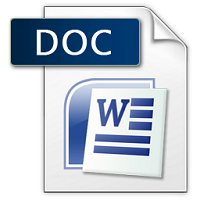Original price was: ₹300.00.₹199.00Current price is: ₹199.00.
Note – Scroll down and match your questions
Note- Unique Ready to Upload
700 per assignment
Unique order via whatsapp only
Whatsapp +91 8791490301
Description
Operations Management
Jun 2025 Examination
Q1. A global solar panel manufacturing company is planning to set up a large-scale production facility in South Asia to capitalize on the growing demand for renewable energy and reduce production costs. As the regional head of operations, you are responsible for selecting the most strategic location for the new manufacturing plant. Identify and discuss the key factors that influence the selection of a manufacturing facility location, including economic, logistical, regulatory, and labor-related aspects. Based on these factors, recommend India in South Asia for setting up the facility, providing justifications with relevant data and industry insights to support your decision. (10 Marks)
Ans 1.
Introduction
In today’s competitive and sustainability-driven global market, solar panel manufacturers are increasingly looking toward emerging economies for cost-effective and scalable manufacturing setups. South Asia, with its growing energy demands and favorable market conditions, has emerged as a promising region. As the regional head of operations, selecting an optimal location for a new manufacturing facility requires evaluating a blend of economic viability, infrastructure quality, regulatory policies, labor availability, and logistical feasibility. Among South
Fully solved you can download
ASSIGNMENTS JUNE 2025
- Fully Solved, High Quality
- Lowest Price Guarantee: Just ₹199 per Assignment!
- 100% Original & Manually Solved (No AI/ChatGPT!)
Hurry! Last Date: 29 May 2025
- Order Now: com/online-buy-2/
Quick Response Guaranteed!
For Unique Assignment please contact on
- WhatsApp: 8791490301
- [email protected]
- aapkieducation.com
Q2. Explain the fundamental concept of TOC and its significance in optimizing pharmaceutical manufacturing processes by identifying common constraints in the industry. Discuss how synchronous manufacturing can be applied to improve production scheduling and efficiency in the pharmaceutical sector. Also Illustrate how the Drum-Buffer-Rope (DBR) methodology can enhance overall system performance, reduce lead times, and increase throughput in pharmaceutical manufacturing. (10 Marks)
Ans 2.
Introduction
The Theory of Constraints (TOC), developed by Dr. Eliyahu Goldratt, is a powerful management philosophy focused on identifying and managing the most critical bottleneck—or constraint—that limits system performance. In pharmaceutical manufacturing, where compliance, precision, and speed are paramount, optimizing every stage of the production process is vital. Constraints, such as long changeover times, regulatory testing delays, or batch production inefficiencies,
Q3A. Akasa Air, one of India’s newest airline companies, is focused on enhancing service quality and operational efficiency to establish itself in the competitive aviation sector. The use of quality management tools is crucial for maintaining high service standards, ensuring passenger safety, and optimizing operations. Explain the role of an operations manager in implementing and monitoring quality control measures at Akasa Air, focusing on how these measures contribute to safety, efficiency, and customer satisfaction. (5 Marks)
Ans 3a.
Introduction
In the highly regulated and customer-centric aviation industry, maintaining service quality and operational excellence is vital. Akasa Air, as a new entrant, must establish a reputation for safety, punctuality, and reliability. The operations manager plays a critical role in implementing and monitoring quality control systems that meet international aviation standards. Through quality management tools and continuous process evaluation, the operations manager ensures that Akasa Air delivers exceptional service while complying with safety regulations and
Q3B. Akasa Air, one of India’s newest airline companies, is focused on enhancing service quality and operational efficiency to establish itself in the competitive aviation sector. The use of quality management tools is crucial for maintaining high service standards, ensuring passenger safety, and optimizing operations. Discuss the various dimensions of quality in the airline industry, using Akasa Air as an example. Explain how each dimension contributes to enhancing passenger experience and improving operational efficiency. (5 Marks)
Ans 3b.
Introduction
In the aviation industry, quality is not limited to the product or service but includes every aspect of the customer journey. Airlines like Akasa Air must manage multiple dimensions of quality to ensure passenger satisfaction and operational efficiency. These dimensions encompass


